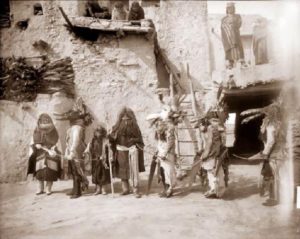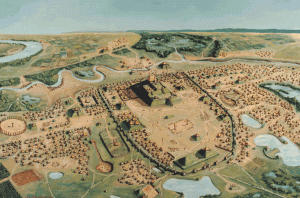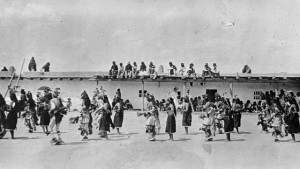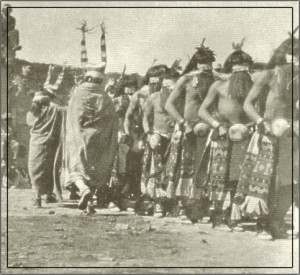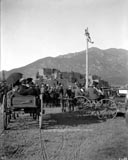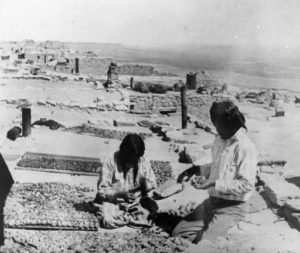
Hopi Indians Removing Pits from Peaches Before Drying, courtesy Library of Congress
Some Native American women held special positions in tribes (see last two posts), but almost any female possessed food-gathering and culinary skills of great value. When settlers first began pushing West, they found survival on the unforgiving Plains and desert areas very difficult. Scurvy (a vitamin C deficiency) was a special problem until whites could settle long enough to grow vegetables. Yet, Native American women knew to eat raw (wild) greens, berries, and vegetables to prevent scurvy and other nutritional diseases. They also knew how to make calorie-dense pemmican and jerky which kept well and could be used during lean times. Native Americans also ate parts of buffalo and other game that most whites disdained, but liver, brains, heart, and intestines are nutritious parts of the animal.
Whites did not want to eat things like grass, clover, cactus, wild artichokes, or cattails. They tended to cook all their food and frequently bypassed raw edibles that could have eased their hunger or provided better nutrition in the raw state; additionally, they were often suspicious of new foods. Though whites could have learned a lot by observing the peoples who had obviously lived successfully on the land for thousands of years, they held so many cultural prejudices that it was difficult for them to emulate the wisdom of Native American eating patterns.
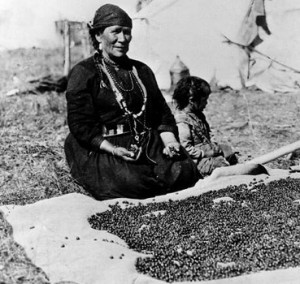
Native American Woman Adding Berries to Make Pemmican
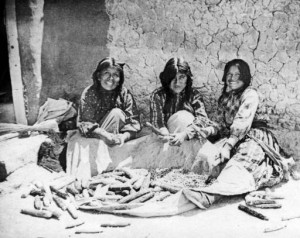
Indian (Pueblos) Food Preparation, 1899 or 1900, courtesy Library of Congress
______________________________________________________________________________________


